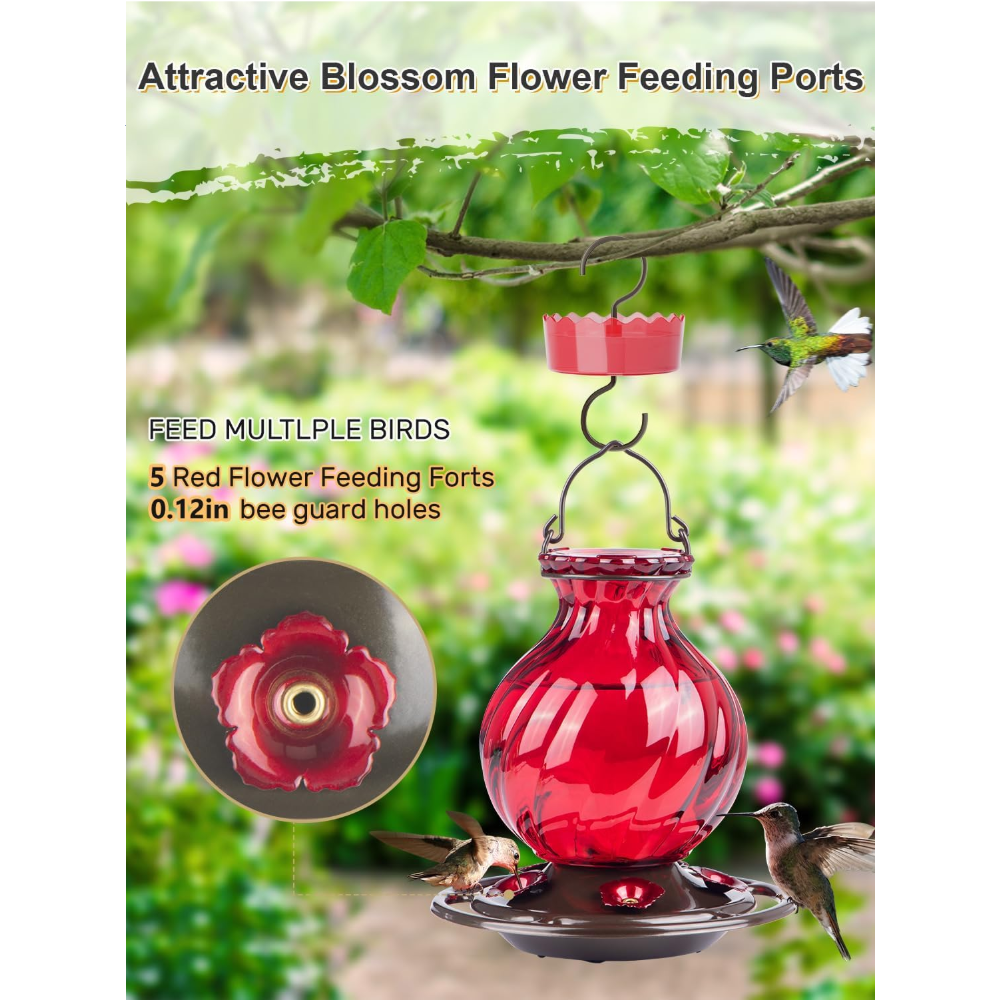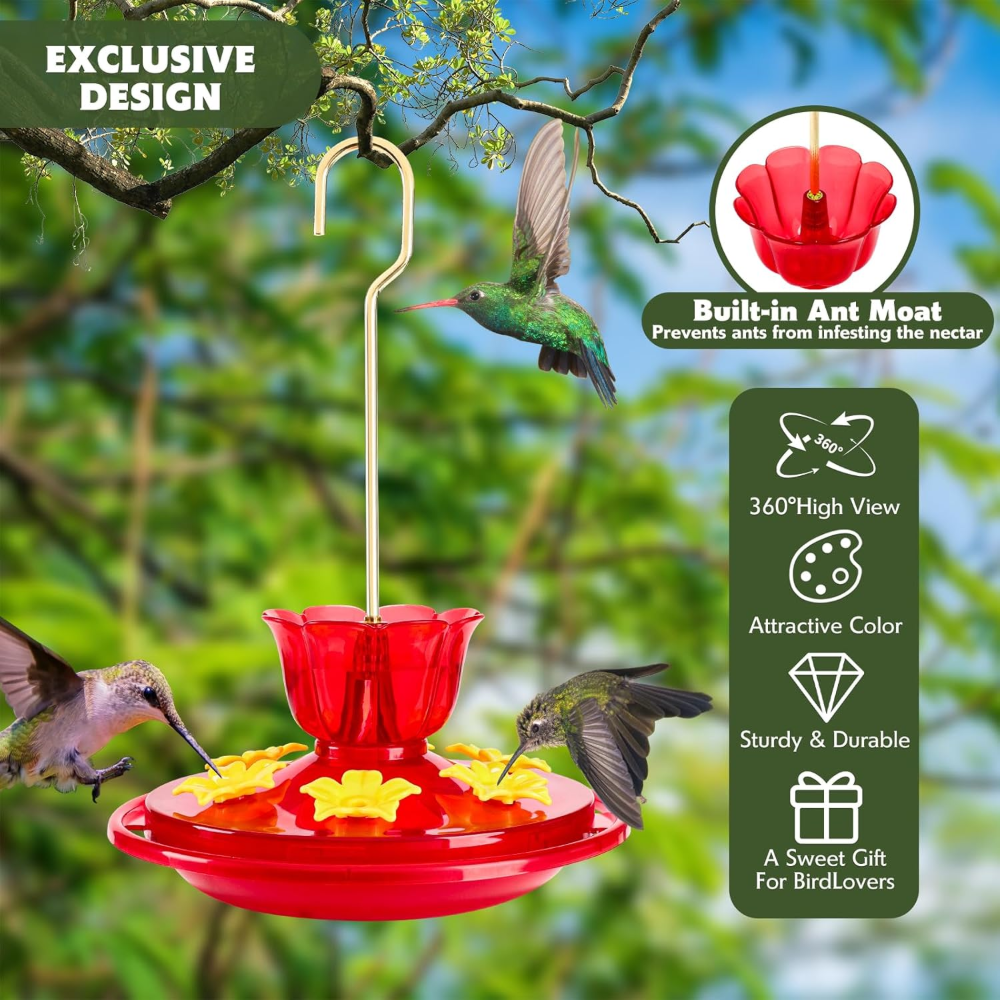Key Takeaways:
- Understanding the Problem: Learn why bees are attracted to hummingbird feeders and how to prevent them.
- Effective Solutions: Discover practical methods to keep bees at bay without harming them.
- Maintenance Tips: Regular upkeep can ensure a bee-free feeder environment.
The Buzz About Bees and Hummingbird Feeders
Hummingbird feeders are a delightful addition to any garden, offering a front-row seat to nature's aerial acrobats. However, these feeders can also attract unwanted guests—bees. Bees are naturally drawn to the sweet nectar, leading to a buzzing battle over the sugary treat. This not only deters hummingbirds but can also lead to feeder contamination.
Understanding why bees flock to these feeders is the first step in addressing the issue. Bees are attracted to the bright colors and sugary scents, mistaking them for flowers. This attraction can lead to swarms, making it difficult for hummingbirds to feed peacefully. By recognizing these triggers, you can implement strategies to keep bees away while still enjoying the beauty of hummingbirds.
Why Bees Love Your Feeder
Bees are essential pollinators, playing a crucial role in our ecosystem. Their attraction to hummingbird feeders stems from their instinctual drive to find nectar. The vibrant colors of feeders mimic flowers, and the sugary solution inside is irresistible to them. This natural behavior, while beneficial for pollination, can become a nuisance when bees overrun your feeder.
The design of many feeders can inadvertently invite bees. Feeders with yellow accents or exposed nectar ports are particularly enticing. Bees are adept at finding food sources, and once they discover a feeder, they communicate its location to the hive, leading to an influx of visitors. Understanding these factors can help you modify your feeder setup to be less appealing to bees.
Choosing the Right Feeder
Selecting a feeder designed to deter bees is a proactive step in managing this issue. Opt for feeders with red accents, as bees are less attracted to this color compared to yellow. Additionally, feeders with bee guards or ant moats can prevent bees from accessing the nectar. These features create a barrier, allowing hummingbirds to feed without competition.
Another consideration is the type of feeder. Saucer-style feeders are less accessible to bees than those with vertical tubes. The shallow design of saucer feeders makes it difficult for bees to reach the nectar, while hummingbirds can easily access it with their long beaks. By choosing the right feeder, you can significantly reduce bee visits.
Location, Location, Location
Where you place your feeder can greatly influence bee activity. Positioning the feeder in a shaded area can make it less visible to bees, who prefer sunny spots. Additionally, placing the feeder away from flowering plants can reduce the likelihood of bees stumbling upon it while foraging.
Consider hanging the feeder at a height that is less accessible to bees. Hummingbirds are agile and can easily reach feeders placed higher up, whereas bees may struggle. By strategically placing your feeder, you can create a more inviting environment for hummingbirds while discouraging bees.
Homemade Nectar Solutions
The nectar solution you use can also impact bee attraction. A simple recipe of four parts water to one part sugar is ideal for hummingbirds and less appealing to bees. Avoid using honey or artificial sweeteners, as these can ferment and attract more bees.
Boiling the water before mixing can help dissolve the sugar more effectively and reduce the risk of fermentation. Once cooled, fill your feeder with this solution. Regularly changing the nectar and cleaning the feeder can prevent bees from becoming a persistent problem.
Natural Deterrents
Using natural deterrents can be an effective way to keep bees away without harming them. Mint plants, for example, can be planted near feeders to repel bees. The strong scent of mint is unappealing to bees but does not affect hummingbirds.
Another option is to use essential oils such as peppermint or eucalyptus. A few drops around the feeder can deter bees while remaining safe for hummingbirds. These natural solutions offer a gentle way to manage bee activity without disrupting the ecosystem.
Regular Maintenance is Key
Maintaining your feeder is crucial in preventing bee invasions. Regular cleaning removes any residue that might attract bees. Use a mild soap and water solution to clean the feeder thoroughly, ensuring no sugar buildup remains.
Inspect the feeder for leaks or cracks, as these can provide easy access for bees. Repair or replace damaged feeders promptly to maintain a bee-free environment. Consistent maintenance not only deters bees but also ensures a healthy feeding station for hummingbirds.
Creating a Bee-Friendly Zone
While keeping bees away from your feeder is important, creating a bee-friendly zone elsewhere in your garden can help. Planting a variety of flowers that bloom at different times can provide bees with an alternative food source. This not only supports bee populations but also keeps them occupied and away from your feeder.
Consider dedicating a section of your garden to bee-friendly plants such as lavender, sunflowers, and clover. By providing bees with their own space, you can enjoy the presence of both bees and hummingbirds without conflict.
Case Study: Successful Bee Management
Take the example of a gardener in Oregon who faced a persistent bee problem. By switching to a saucer-style feeder and planting mint around the feeding area, they noticed a significant decrease in bee activity. Additionally, they placed the feeder in a shaded spot, further reducing bee visits.
This gardener's experience highlights the effectiveness of combining multiple strategies. By understanding bee behavior and making simple adjustments, they were able to enjoy hummingbirds without the constant buzz of bees. This case study serves as a practical example of how these methods can be applied successfully.
5 of the Top Bee-Proof Hummingbird Feeders Available on Amazon
We hope you find your next awesome thing from the list below! Each product was independently selected by our editors. Some may have been sent as samples for us to fiddle with, but all opinions in this article are our own. Oh, and FYI — AnnesAnalytics may collect a share of sales or other compensation from the links on this page if you decide to buy something (that's how we stay in business). Reviews have been edited for length and clarity. Enjoy finding your next awesome thing.
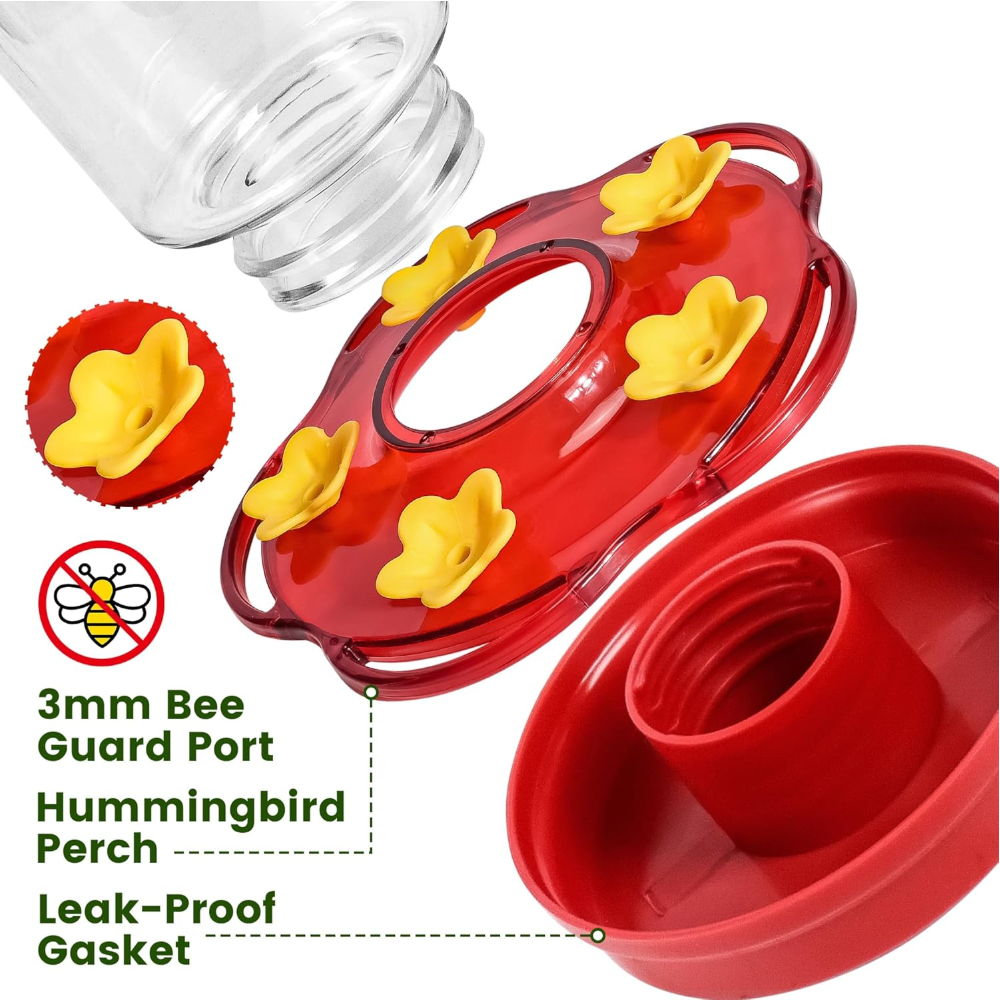
Plastic Hummingbird Feeders for Outdoors Hanging Ant and Bee Proof
2 Pack 15 Ounces Red Hummingbird Feeder with 5 Feeding Ports and Perches, Built-in Ant Moat, Outside Garden Décor
Why We Love This
Our bee-proof hummingbird feeder is crafted from high-quality plastic, ensuring durability and resistance to high temperatures, making it perfect for long-term outdoor use. We've optimized and upgraded the design to ensure a seamless connection between the bottle and base, eliminating the need for washers and effectively preventing leaks.
Key Features:
- High-Quality Material: Made from sturdy plastic for long-lasting use.
- Temperature Resistant: Withstands high temperatures, ideal for outdoor environments.
- Leak-Proof Design: Innovative design ensures a tight seal without washers.
Enhance your garden with our reliable and efficient hummingbird feeder, designed to keep bees at bay while providing a safe feeding spot for hummingbirds.
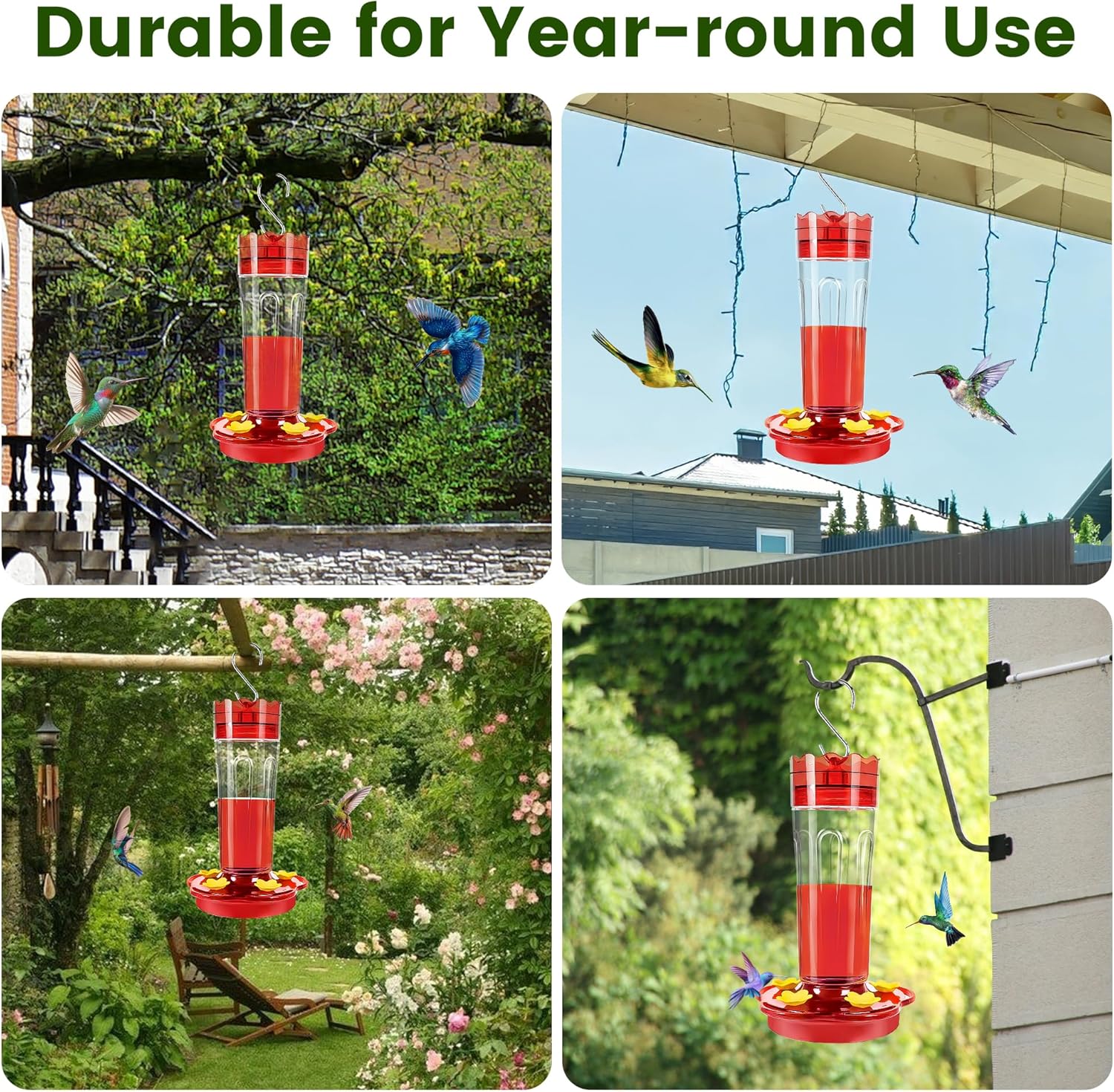
Encouraging Review
"This feeder is made of sturdy plastic and easy to fill. I like that the size is a bit smaller, as one should change out the sugar water weekly. I've had bigger ones in the past and ended up wasting food. I also appreciate that it doesn't leak." Amazon Review by Janet Lee W.
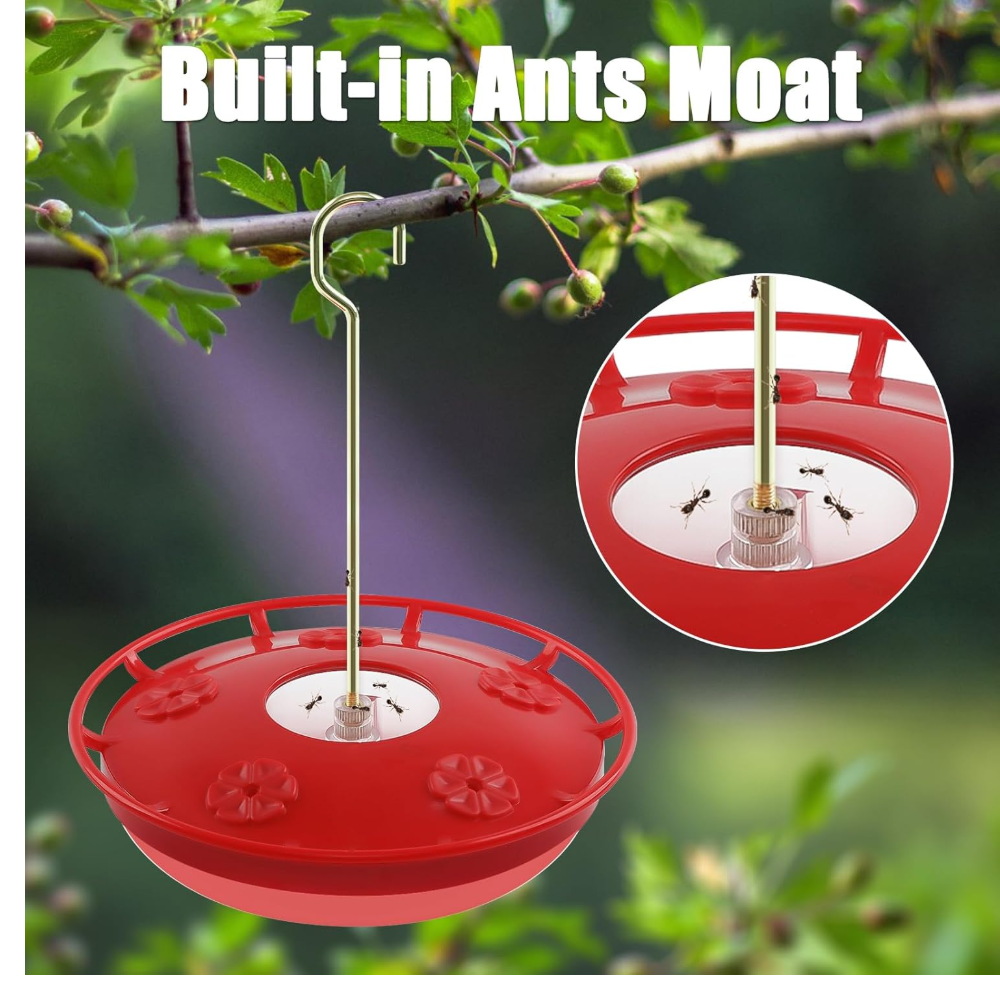
FEED GARDEN 2 Pack 16 OZ Hummingbird Feeders for Outdoors
5 Feeder Ports Ant Bee Proof Leak-Proof Cleaning Brushes Nectar
Why We Love This
Attract hummingbirds with this bright red feeder! It measures 9.4 inches high and 8.2 inches wide. It holds 16 ounces of nectar, perfect for hungry birds. Five flower-shaped ports let several hummingbirds feed at once. Perches surround the feeder, giving birds a place to rest while they eat. Hang this feeder outside and enjoy watching the hummingbirds.
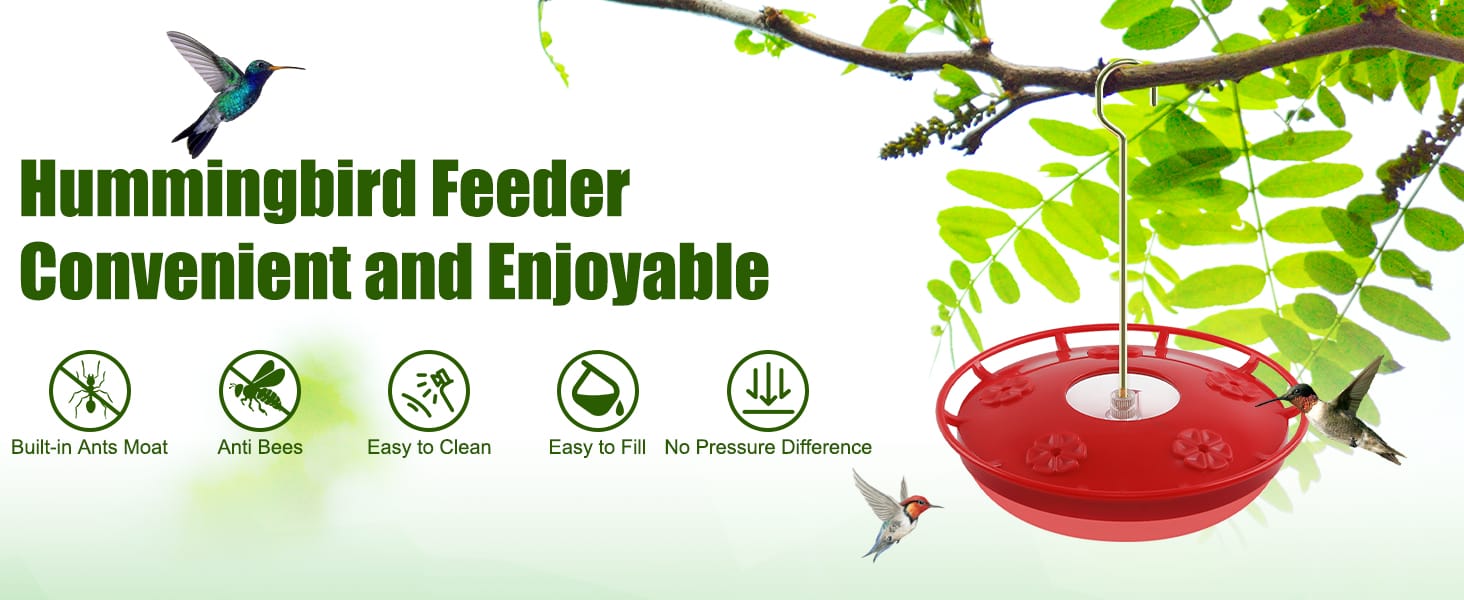
Encouraging Review
"As much as I love to support our local bird store, they sell one of these (identical) for $25. I gave these a try and they are so sturdy, easy to clean, and have lasted. The lid rests on the tray, does not pop into place, but that doesn't affect them at all - just worth noting. I have not dropped them, I believe they might survive depending on how and what they land on, but if not - cheap to replace." Amazon Review by Claudia
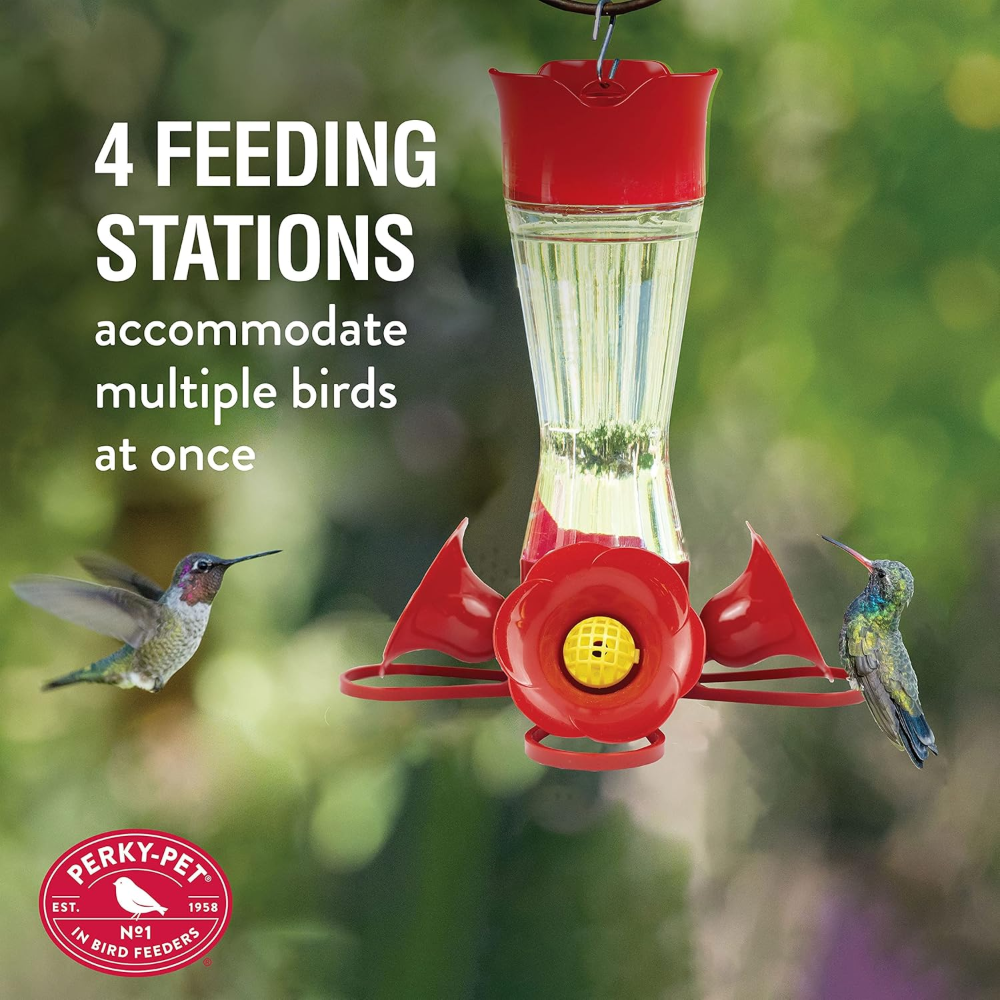
Perky-Pet 203CPBN-2 Pinch-Waist Glass Hummingbird Feeder with Perches
Built-in Ant Moat and Bee Guards - 2 Pack
Why We Love This
Enjoy hummingbirds up close with the Perky-Pet Pinch-Waist feeder. This classic design has great new features. A wide-mouth bottle makes filling easy. The U-shaped perches are perfect for birds. Hummers can't resist the bright color. It holds 8 oz of nectar. Cleaning is simple since it comes apart. Take off the ant moat, base, and bottle with ease. Even the bee guards can be pulled apart! The wide-mouth lets you reach all spots. It also means less mess when you fill it. This feeder also stops bugs. Bee guards keep bees out, but let hummingbirds feed. Fill the lid with water to stop ants. This creates a barrier to protect the nectar.

Encouraging Review
"Real nice hummingbird feeder. Same as the one I purchased in a store." Amazon Review by Clyde Lambert
Why We Love This
We learned a lot about hummingbirds and what they like. We used their favorite colors to design a beautiful feeder. This outdoor hummingbird feeder also has helpful features. An ant moat and bee guards keep nectar safe from pests.
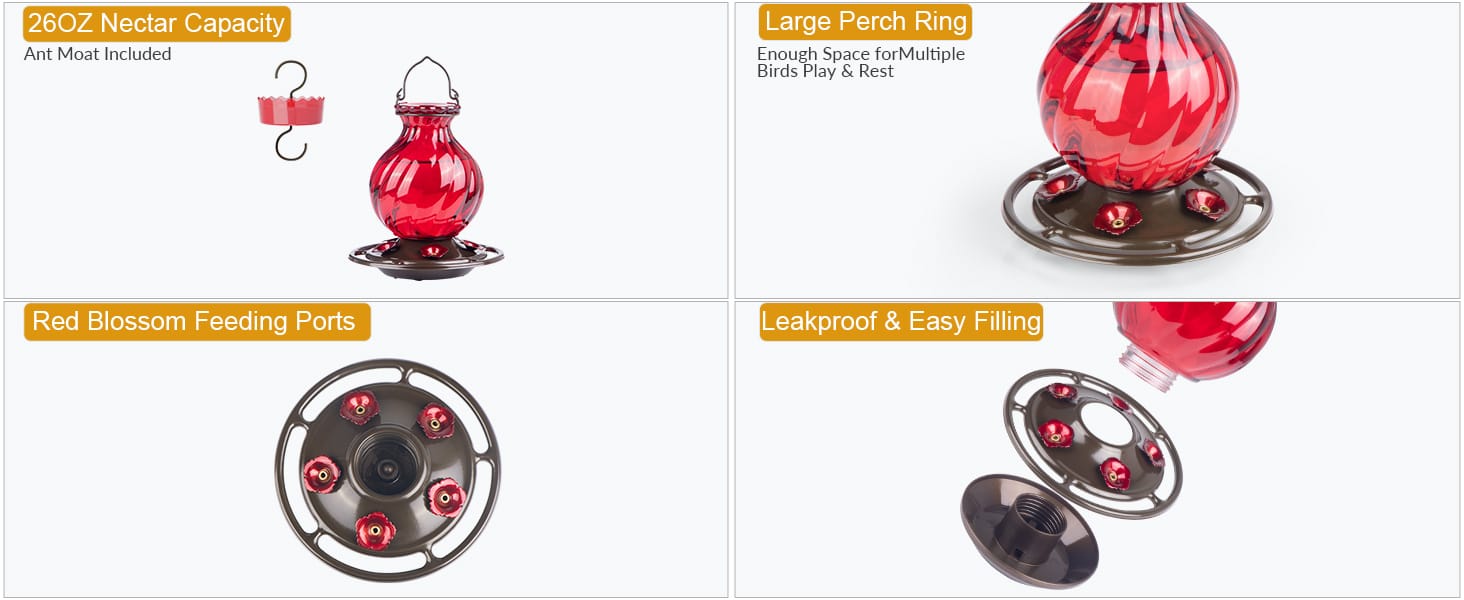
Encouraging Review
"This is a nice feeder. It is easy to fill. Only had it a week at most and we have had hummers at it already!!" Amazon Review by Lynn P
Why We Love This
Keep ants away from hummingbird food with an ant moat. Just add water to the moat on top of the feeder. This creates a barrier, stopping ants in their tracks. It keeps the nectar clean, so hummingbirds enjoy a bug-free meal.
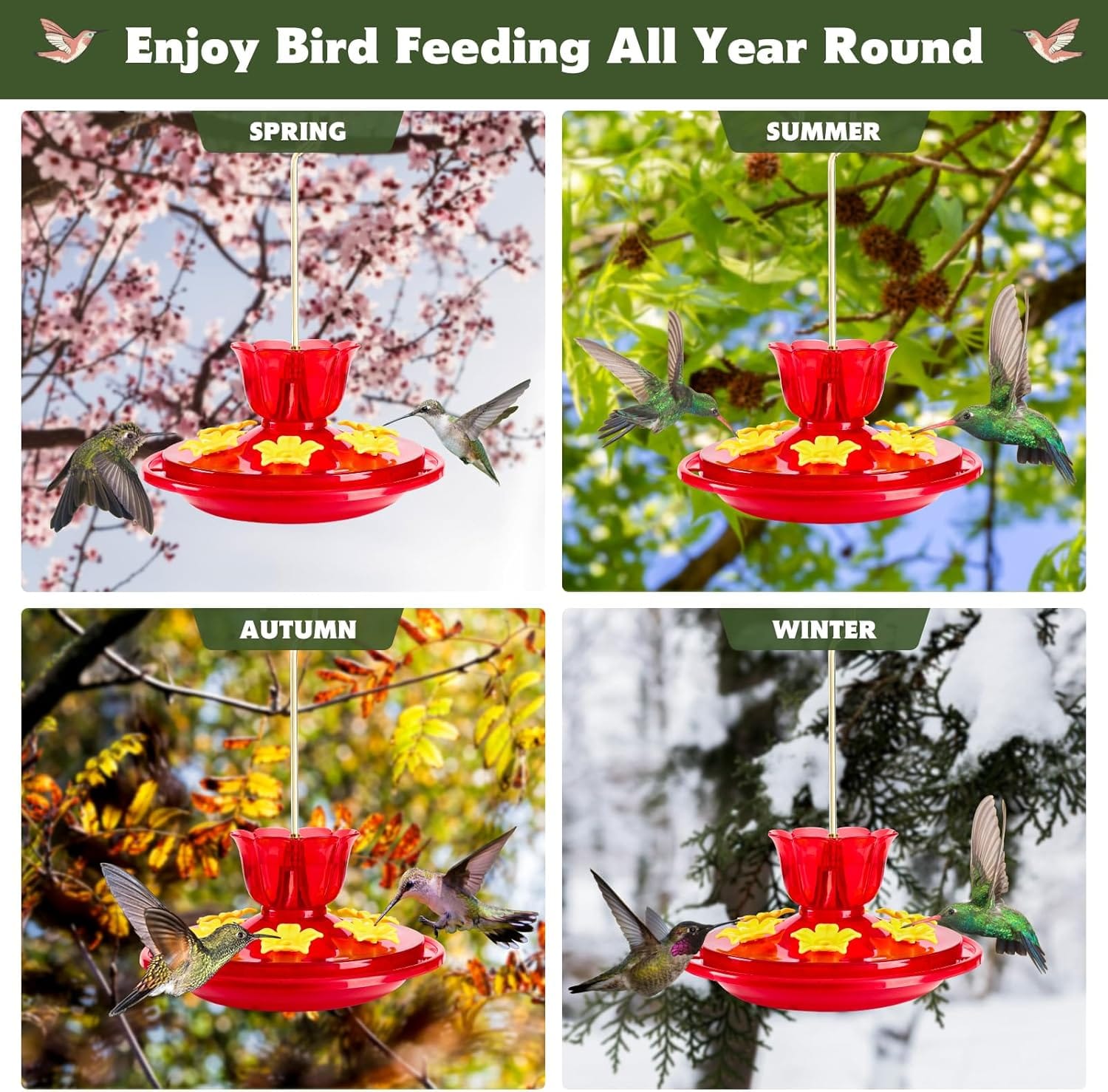
Encouraging Review
"These are the first hummingbird feeders I have ever had. They were easy to put together & fill. They seem to be well made. They are super cute & I like the price for two. Just waiting to see if there are any hummingbirds around." Amazon Review by Tytramom
Summary
Keeping bees away from hummingbird feeders requires a combination of understanding, strategic planning, and regular maintenance. By choosing the right feeder, placing it wisely, and using natural deterrents, you can create a harmonious environment for hummingbirds. Additionally, providing alternative food sources for bees ensures they remain a beneficial part of your garden ecosystem.
FAQ Section
Q1: Can I use commercial bee repellents on my feeder?
A1: It's best to avoid chemical repellents as they can harm both bees and hummingbirds. Opt for natural deterrents like mint or essential oils instead.
Q2: How often should I clean my hummingbird feeder?
A2: Clean your feeder every 3-5 days, especially in warm weather, to prevent mold and fermentation, which can attract bees.
Q3: What should I do if bees continue to swarm my feeder?
A3: If bees persist, try relocating the feeder or adjusting the nectar recipe. Ensuring no leaks or spills can also help reduce bee attraction.


